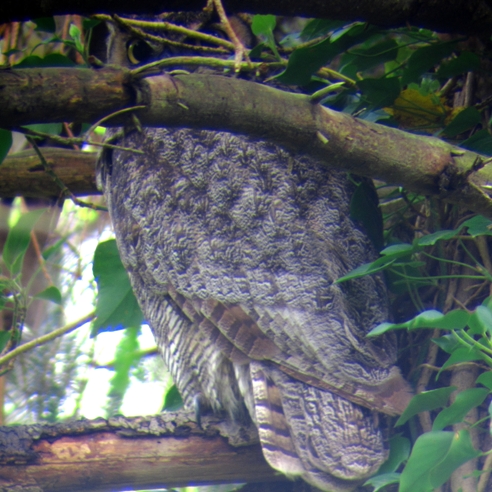Great Horned Owl
By Mike Coll, Preserve Manager
Yesterday, while eating lunch at the preserve, I heard a group of American Crows making a racket. Their calls were loud, constant, and–unlike the normal calls that Crows make intermittently while flying–this group was crowing at the same time and from the same tree. These were alarm calls, which were intended to draw even more Crows into the area so they can “mob” one of their natural enemies: a Great Horned Owl. Almost every time that I have seen an owl it has been by following this type of Crow commotion to a nearby tree where, after careful searching, I have been able to spot the silhouette of one of these huge, secretive birds sitting on a branch close to the trunk.

This time, the owl was not hard to locate and, unlike many of the owls I’ve seen in the past, this one did not fly away when I got within sight of it. In fact, this Great Horned Owl sat on the same branch and endured attacks by Crows, a Red-shouldered Hawk, Blue Jays, and even a Cardinal for many hours. All of these birds were eager to drive the owl out of the area. Normally owls hide during daylight hours, but if they are located by other birds–as this one was–they are somewhat vulnerable. It is in the other birds’ best interest to drive the owl out while they have the chance because, by nightfall, the tables will turn and the owl will become a threat, especially to eggs and nestlings.
Like almost all bird behavior, I think it is unlikely that the mobbing birds really understand much of this. They experience an instinctive reaction to seeing an owl. This reaction has been ingrained through evolution; birds that drove owls out of their area were more likely to successfully raise young and pass on their genes. Therefore, the generations of birds that followed tended to have the trait of aggression towards owls.
Here’s a video I shot of the action:
